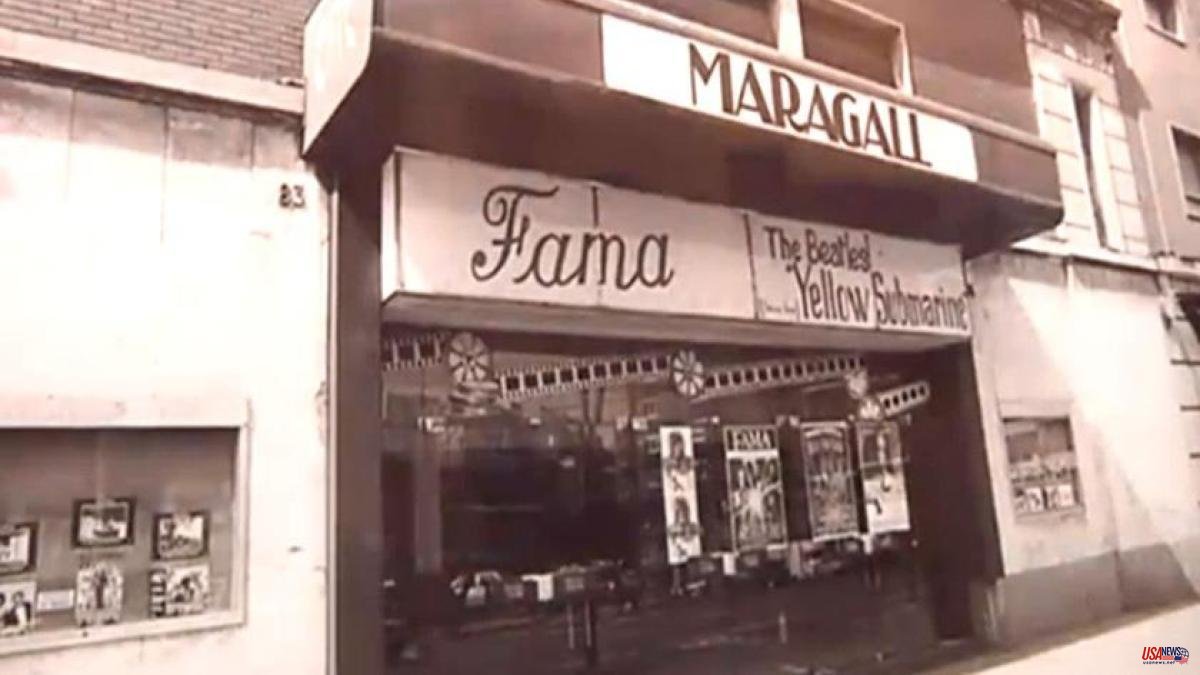* The author is part of the community of readers of La Vanguardia
The origin of the cinemas Salón Guinardó and Maragall takes place in the old street of Escornalbou 43, current corner Renaixença, very close to number 30, where the missing Casa Encantada was located.
The Guinardó Hall occupied a part of the former headquarters of the Catalan Athenaeum in this Barcelona neighborhood that belonged to the Catalanist League and inaugurated in 1931.
In the premises, the workers' acts were carried out, as in the different athenaeums of the city with purchasing cooperatives. In addition, events dedicated to the child population were held with festivals of clowns, puppets and distribution of toys.
Later, in February 1935, the decision was made to renovate the premises to turn it into the Ateneu Català del Guinardó, whose foundation stone was laid by Ramón d'Abadal, of the Catalan League.
The venue was inaugurated on June 23, 1935, at the San Juan festival, with the assistance of Francesc Cambó.
After the civil war, it was requisitioned again, this time by the Spanish Falange. A part of the premises, which had an entrance through the old Renaixença street, was managed by the Estudios de la Cinematográfica Marín, a company dedicated to dubbing, selling and renting films and film projectors.
The site facing Escornalbou, in 1940 became the Salón Guinardó cinema, built by Antonio Serralla, who together with his family became, years later, the owners of the Cine Maragall, located a few streets below.
The old auditorium of the old Athenaeum was converted into a cinema, with a small audience and a four-row amphitheater and a small stage for performing performances by variety artists, which at that time was crowded with illusionists and stage artists. Spanish song. The old terrace and the open-air bar were used to be used during breaks by spectators.
The first film shown was the American film, Test Pilot, directed by Victor Fleming, starring Spencer Tracy, Clark Gable and Myrna Loy.
Antonio Serralla, had only acquired a projection machine, which at first was a problem, since the films were divided into several reels, which forced cinemas to have two projectors, so that when one reel finished, the other projector would automatically jump. offering continuity.
This forced the operator to have to turn off the machine and change the coil, which meant the screaming, whistling and kicking of the spectators.
With the inauguration on February 23, 1946 of the new Maragall Cinema, Antonio Serralla got a place with more projection.
Located at Paseo de Maragall 83, it was built by Carlos Martínez for Antonio Serralla, who had made his first steps in the world of cinema in the now-defunct Salón Guinardó. The new premises had much more projection, since several tram lines from two of the city's neighborhoods passed along Paseo Maragall.
At first it only occupied a part of the site, with a capacity of 708 spectators in which sessions were only held from Thursday to Sunday and holidays. It was inaugurated on February 23, 1946.
During this decade and part of the 50s, neighborhood cinemas had wooden floors, which, at that time, represented another incentive when it came to power cuts, broken tape (due to use) and stopped. the projection to splice it.
Other times when the last scenes arrived (especially in western movies) and the cavalry arrived to save the inhabitants of the forts harassed by the Indians, all the spectators in unison began to stamp their feet against the ground as a sign of victory.
Its situation near the neighborhood of the Congress was taken advantage of, on April 19, 1952, by the Youth of Catholic Action to hold a concentration, on the occasion of the celebration the following year of the XXXV International Eucharistic Congress.
The Serralla family found in Rafael Casasús Ayné, head of the company Omnia, S.A., the ideal programmer for the development of the cinema, turning it into one of the favorites of the Campo del Arpa, a circumstance that once again led Carlos Martínez to carry out an extension in the part later that reached the Garcini passage, in 1959, going from 708 to 1,198 spectators.
This change in the capacity of the premises made it necessary to replace the screen with a large one and to place an emergency door on the passage side, to prevent a possible mass exit due to an incident.
In 1969, together with the América, Turó and Eslava cinemas, he programmed La novia vestía de negro, a drama by François Truffaut, played by Jeanne Moreau and Serae Rousseau.
In the spring of 1977, on the occasion of the Guinardó Festival, the Valencian singer-songwriter Ramón Pelegero Sanchis, better known as Raimon, performed at the venue on May 26.
After Serralta's retirement, his daughter Rosa continued to manage the cinema, until it was transferred to the critics Àlex Gorina and Pablo López, who, in 1981, turned the cinema into a special room.
From Monday to Wednesday, films were shown in their original version with subtitles and from Thursday to Sunday, the most commercial reruns that the first-run theaters had left, to achieve a greater influx of a more popular audience.
This change in programming, although at first it was spectacularly successful, gradually faded away, forcing its final closure on November 4, 1985.













